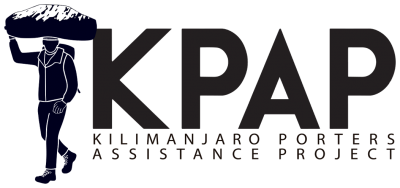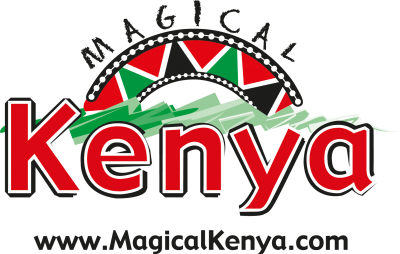Kenya
Welcome to Kenya, the last paradise on earth. In a country that is called the cradle of life. In a land of endless possibilities and contrasts.
Unlike other places, Kenya is the essence of diversity. It is here that you will find the best and best-preserved national parks full of wild and endangered wildlife, as well as some of the most beautiful beaches in the Indian Ocean. You can spend the night here in the most luxurious hotels, but also in safari tents or eco houses. Here you will find an established tourist infrastructure and some of the friendliest people in the world, the longest fissure in the earth's mantle full of lakes, flowers shining with all colors and drought-stricken shrubs, savannas and deserts as well as tropical rainforests.
Kenya is a unique country where you can visit the wildest game in its natural habitat, sail on a Swahili boat around a 16th-century Portuguese fortress or meet warriors from the Maasai tribe, whose lifestyle and traditions have not changed since the beginning of time. Only here can you climb the second highest mountain in Africa, fly a balloon over millions of migrating ungulates or ride a camel.
In 56 national parks and reserves, Kenya hides some of the oldest representatives of wildlife on earth. The plains and forests of Kenya provide refuge to the last great beasts, the largest herds of elephants, endangered white and black rhinos, and several endemics not found anywhere else.
Kenya is highly valued for its wildlife not only because of its "Big Five", but also because of the many other, highly protected and endangered species that represent the country's unique heritage. Some species are so small that they cannot be seen.
When and where to Kenya
It can be said that the weather in Kenya is similar all year round, mainly due to the fact that it lies on the equator. The only exception is the rainy season, which begins each year in Kenya at the turn of March and April and ends in the first half of June. However, even this season has its charm. On the coast, especially on Diani Beach, it rains mostly at night, which creates pleasant conditions for relaxation and sleep. In the morning, the sky breaks and the days are usually sunny even during the rains. However, this cannot be taken as a rule. It is becoming more and more common that it rains for several days at a time. Inland, the rainy situation is worse. It's raining longer and harder than on the coast.
Average air temperatures range from 28°C to 32°C. 28°C is mainly during the rainy season. Ocean temperatures range from 25 ° C to an incredible 28°C. It dawns in Kenya all year before just before seven o'clock in the morning and the sun sets again just before seven o'clock in the evening.
From our own experience we know that the ideal place for a holiday in Kenya is Diani Beach. And for several reasons. The biggest of them, in our opinion, is the presence of coral, which stretches at a distance of about 700 m. From the shore along the entire Diani Beach. The coral creates a kind of barrier between the coast and the open ocean. At high tide, even the biggest waves break on it, at low tide the coral then creates a beautiful water lagoon, as if created for swimming. Another advantage is the greater privacy and smaller crowds over the northern coast, thanks to the more complex, but not complicated, traffic from Mombasa International Airport. There is only one road from Diana to the airport, the waterway. So you have to cross the bay in Mombasa by ferry. You will find the best and best rated hotels in Kenya. It is no coincidence that, according to an independent survey, Diani Beach is one of the 20 most beautiful beaches in the world.
Very attractive in terms of wildlife in the parks is the annual "great migration". It has been going on for centuries between two parks. Tanzania's Serengeti Park and Kenya's Maasai Mara Reserve. Incredible masses of animals, especially the millions of nostalgically known brindle wildebeests, zebras, giraffes, etc., set out on a pilgrimage across the African continent every year. As they graze their food in the Serengeti, wildebeests, many other species of antelope and zebras move to the northern Masai Mary. Giraffes, elephants, lions, leopards, cheetahs, hyenas as well as vultures, marabou storks and other scavengers move along with ungulates. They migrate for food from the southern part of the Serengeti to the north, to the Maasai Mara National Reserve in Kenya. This event begins at the turn of July and August. During October, the game migrates back again. Shots and pictures of endless herds, breathtakingly crossing the Mara River, wage a struggle for survival (both ungulates who have to cross the river to get to the green pastures and predators from the Mara River, led by Nile crocodiles who take risks, to secure food), each of you certainly knows.
However, Kenya's national parks and reserves are abundantly inhabited by wildlife throughout the year. It is then mainly up to experienced drivers and park guides, of whom our travel agency has many to take you to the animals. Drivers and rangers communicate with each other using radios and are therefore in many cases able to take you to the animals.
An indispensable necessity, when visiting a Kenyan park, whether Masai Mary or otherwise, is undoubtedly a visit to a Maasai village. For a small fee (about 10 USD), you will look at a real Maasai tribe that has lived an unchanged way of life and adhering to traditions for centuries.
The Maasai are an African black ethnic group of Nilot origin. After a long migration in the past, the Maasai settled between Kilimanjaro and Mount Kenya (Near Heaven) in present-day northern Tanzania and southwestern Kenya. The number of Maasai is estimated at 250,000. Their reputation as unbridled warriors and the preservation of their original way of life is admirable in today's modern world. He speaks Mao, which is a Nilo-Saharan language group. The Maasai are still patriarchal. Maasai living is one of the unchanged and still used traditions. The Maasai village, or Boma, has a circular shape. It is surrounded by a rich dense "fence" built of branches. This fence forms the outer circle of the village. Inside the village is another wide circular enclosure, where animals hide from wildlife for the night. This enclosure forms the core of the village. The huts are "built" exclusively by women using the original technology. The material is provided by nature. The skeleton of the hut consists of wooden poles fixed in the ground, which are interwoven with smaller poles. A mixture of mud, grass, urine, manure and ash is added to them - all sun-dried. The shack is relatively small - 3x5 m and does not exceed 1.5 m in height - an adult man will not stand in the shack. Inside we can find home cooking, there is a food store and family property. The Maasai sleep and eat here, there are also small animals. There is a fireplace in the middle, although there is no chimney or windows in the hut. The entrance leads to the hut indirectly, which is a kind of security measure against uninvited night visits. Overnight, the entrance is still covered with various fabrics and sticks. The shack not only ensures cold, but we can't find flies inside.
Information before the trip
Things to watch out for when traveling to Kenya
Visas - E-Visa is newly introduced for entry into Kenya. Children under the age of 16 can currently only travel to Kenya on the basis of a passport, without the need for a visa.
More info on visas: http://www.magicalkenya.com/visit-kenya/visa-information/.
The visa is valid for 3 months.
Vaccinations - No vaccinations are required when traveling to Kenya.
Recommended vaccinations: Hepatitis A and B and typhoid fever.
Customs regulations - when traveling to Kenya, it is allowed to bring 1 carton (200 pieces) of cigarettes or 50 cigars, 1 liter of alcohol, 250 ml of perfume. It is forbidden to export plants, clams, corals, etc. Export, transit, but also the import of any objects originating from or made from wild game (trophies, ivory or leather products of protected animal species, but also, for example, marine fauna) is a criminal offense. The export of live wild animals, insects or plant species without special permission is strictly prohibited.
Money and guide prices
The currency in Kenya is the Kenyan Shilling (KES), which is divided into 100 cents. 1000, 500, 200, 100 and 50 KSh banknotes are in circulation. Then there are smaller copper coins with a value of 20, 10, 5 and 1 KSh. The Kenyan Shilling is freely exchangeable on arrival and departure. In the country, similarly to the Czech Republic, there is an extensive network of private exchange offices. Any undeclared import and export of Kenyan currency in cash is a criminal offense, and bank transfers are relatively free.
You can also withdraw money at ATMs, which are located in all major cities or in tourist zones along the coast. Traveler's checks are accepted at banks and some exchange offices.
1 USD = approx. 100 KES
1 l bottled water 50-150 KES
2 dcl of wine from 140 KES
Cola 60-150 KES
Can beer 100 KES, bottled beer in the shop 100 KES, in the restaurant 120 and more KES
Postcards by size 45-85 KES
Stamp for a look at EU countries 40-75 KES (according to the size of the postcard)
History
Kenya's history dates back millions of years. Some of the oldest fossils of human beings, 2.6 million years old, have been discovered in a large ditch depression at Lake Turkana.
The Kenyan coast has attracted traders since ancient times. In the 8th century, the first Arab trading settlements were established on the coast. At the end of the 15th century, the Portuguese entered the territory. The first of them was the world-famous traveler Vasco da Gama (as evidenced by the port of Mombasa, named after a tomco orbiter, but also his statue, which stands in the city of Malindi). The Portuguese wanted to control the territory, due to its convenient location. A worldwide sea trade route flowed through the port of Mombasa. Portuguese domination of Kenya is still commemorated by the historic Fort Jesus (˅), which they built to protect the city from Arab invasions. In the second half of the 17th century, the country came under the influence of the Omani imman. In the middle of the 18th century, most of the coast came under the rule of the island of Zanzibar. The Sultan of Zanzibar leased land to the British in 1895, and their influence quickly spread inland. It was then declared a British East African Protectorate and until 1904 was administered together with Uganda.
Many Europeans immigrated here and settled the highlands. Europeans seized the territory of the Kikuyu and Lu to grow coffee and tea there. The British used cheap African labor to build railways and guard plantations.
In 1920 it was declared a British crown colony.
Between 1952 and 1959, Kenyan dissatisfaction escalated into a terrorist uprising by the secret nationalist society of Mau-Mau. Thousands of Africans died.
Fort Jesus - Today, Fort Jesus, in the port city of Mombasa, houses a museum of Kenyan history. The fortress was built by the Portuguese in 1593. Its strong high walls protected the coast, which was occupied by Arab traders in the early 16th century. The fortress was also used as a prison. Today, this building is a frequent destination for tourists from all over the world.
Climate and geography
Kenya lies in the equatorial and monsoon zones. To the north and northeast are deserts and semi-deserts. At the coast, the climate is hot and humid. Rainy seasons prevail here in April, May and June.
The warmest months are February and March and the coldest June and July, the difference is up to 7 ° C. Temperatures in the Indian Ocean are around 30 ° C, with Mombasa averaging 29 ° C during the day and 22 ° C at night. In the north, where there are deserts, temperatures exceed 35 ° C. The rest of the area on the plateaus is around 25 ° C, the temperature in Nairobi is around 23 ° C during the day, 14 ° C at night. The average humidity in Nairobi is 72%, in Mombasa 81% and in Kisumu 69%. The average annual sea temperature near Mombasa is 27 ° C.
Leadership
The river network is poorly developed, the rivers are flooded only during the rainy season. The largest springs on plateaus and empties into the Indian Ocean. In the north and northeast, there are rather drying rivers. Lake Victoria (Ukerewe), the largest in Africa, belongs to Kenya only in a small northeastern part. In the north is the salty waterless Rudolf's Lake (Turkana). The longest river is the Tana, measuring 708 km. Kenya has a 536 km long coastline. Water areas cover 13,400 km² of land, which is 2.3% of the total area of Kenya.
Nature
At an altitude of up to 3000 m, savannas predominate. Inland, there are mostly steppes or savannas, to the east of Lake Turkana are deserts or semi-deserts. There are dense tropical forests near the coast and to the west, due to higher rainfall and long-term humidity. At higher altitudes above 3000 m, the vegetation is lower, mountainous. Senecia, lobelia, protei and other plants grow here. Above are lichens and mosses and at the top there are only stones or snow.
Area use: pastures 37%, forests 30%, arable land 8%, others 25%
There are many national parks and reservations in Kenya. The most famous are the Masai Mara Reserve and the Tsavo National Park. The national parks are home to a wide range of game, especially lions, African elephants, giraffes, rhinos, amphibians, African buffalo, steppe zebra, gazelles, cheetah, spotted leopard, antelope, spotted hyena and many different species of birds.
National parks
Kenya is a country where a well-known safari, as we know it today, originated. Did you know that the word "safari" simply and simply means "journey" in Swahili? The term safari was already used by wildlife hunters during the time of colonization. Today, on the other hand, the animal world is strictly protected and large game hunting is banned nationwide in Kenya. In 56 national parks and reserves in Kenya, you can see many species of wildlife, which you can approach in safari cars literally within a few meters. An unforgettable experience for you, for example, will be watching the lioness from the immediate vicinity, playing with the cubs, literally feeling the breath of a roaring rhino or watching a group of elephants going to the river to quench their thirst. The peak of the safari is the great migration, when between July and October millions of wildebeests and zebras travel to the Masai Mary. More about National Parks and Reservations.
Transport
Air Transport
The fastest way to get to Kenya is clearly by air. There are two international airports in Kenya. The first is Jomo Kenyatta International Airport, which is located near Nairobi, the second is MOI International Airport, located about 9 km from Mombasa. Both airports provide services 24 hours a day. The flight to Kenya takes about 8 hours.
The domestic airline is Kenya Airways, which provides scheduled international and domestic flights. Domestic flights are also provided by Air Kenya, air safaris are provided by Safarilink or Mombasa Air Safari.
Road transport
Car rental is quite a cheap business, but you need to pay attention to the quality and seriousness of the rental. You can rent a car if you are over 23 years old and have driving experience. You also need to have an international passport and driver's license. In the high season (Christmas and summer) the prices are higher, in the low season up to half lower.
In Kenya, drive left. The maximum speed in the village is 50 km/h on highways 100 km/h, but most people do not follow the rules. The police do not have the appropriate technology to test drunk drivers, so it is almost customary to drive here under the influence of alcohol.
Due to the problematic quality of roads, domestic drivers drive very quickly, dangerously and very often under the influence of alcohol. During traffic jams, drivers regularly drive in the opposite direction, traffic lights and commands are largely ignored.
Roads are generally in very poor condition, uneven, narrow and congested. Expect sudden obstacles in the form of stones, potholes, animals and people. Avoid traveling at night unless absolutely necessary. Drivers use only high beams at night, which is very annoying when passing such a vehicle.
Bus service
Another option is a bus. You can take long-distance routes in more modern buses. There are no bus stops, the bus stops wherever you want to get off or get on. The price depends on the length of the route. Another type of bus are colorful old minibuses called Matatu. These minibuses are the main form of public transport here. Very often they carry up to three times more passengers. Riding in such a crowded mat is then very curious when the heads, arms and legs protrude from the car. Some cars are in poor technical condition, but driving in it is definitely unforgettable and full of adrenaline. Another variant of cheap transport is the so-called tuk-tuk, which is a motor tricycle.
Taxi
Taxi services are operated here by large and small transport companies, as well as private carriers. The fare should always be agreed in advance, before boarding the car. This will avoid unpleasant bargaining later. It is better to book a car by phone and use the services of the same taxi driver in the future. Taxi drivers often do guides for a fee.
Train transport
A railway corporation in Kenya operates a railway connection between Mombasa and Nairobi. Trains usually leave in the evening and arrive at their destination the next morning. Trains sometimes do not follow a timetable, but most trains are modern and comfortable with bars and restaurants. Tickets must be booked in advance at Nairobi or Mombasa train stations, but can also be arranged through travel agencies. A new high-speed train connection between Mombasa and Nairobi was put into operation in June 2017 on a new railway built by the Chinese in record time. Trains reach speeds of up to 120 km per hour in some places.
Souvenirs
An important part of your stay in Kenya is also the purchase of exotic souvenirs. Kenya is a very diverse country with lots of beautiful and interesting places. There are certain objects attached to these places, thanks to which you will never forget your vacation. You can choose from specialist shops or markets, but it is better to buy them directly from local sellers on the streets or on the beaches. If you can bargain, you will usually get up to a third of the original price.
Wooden statuettes
Kenya is the best place to buy handmade souvenirs. These include Makonde in particular. These are statues made of ebony wood of various sizes and shapes. They are truly works of art and each piece is original. There are also merchants who will offer you carved statuettes in the shape you want - an elephant, a hippo, a lion, a giraffe or Africa, and in addition engrave your name on this statuette. Another very nice souvenir are carved wooden masks that will decorate any interior.
Maasai products
Among the most popular are brightly colored beaded ornaments. Bracelets, chains, rings, belts decorated with pearls and many others are offered by true Maasai, who roam the tourist areas in traditional clothing. Just meeting the massage itself is a great experience, and everyone can really buy a small piece of jewelry from him. It is also necessary to add that the beads with which these jewels are decorated are imported from the Czech Republic. But few Masai know that.
Other very often souvenirs are leather items, especially Maasai shields and spears. These are covered with cowhide or goatskin and dyed in typical Maasai colors. It is necessary to bargain when purchasing. On the one hand, Masai enjoys bargaining very much, and thanks to that, the prices at the beginning are very exaggerated.
Scarves - Kanga, Kikoi
Kanga are brightly colored cotton women's clothing that are sold in pairs. Women tie them around their waists or tie their clothes in a special way. It is typical on them that they are decorated with beautiful folk Swahili proverbs. This makes it one of the most frequently purchased souvenirs from Kenya.
Kikoi are colorful scarves made of thicker striped cotton. This is a very practical thing for all visitors to Kenya. It is good to get a Kikoi at the beginning of your vacation. During the day it will serve as a light towel on the beach, in the evening as a bedspread when the wind starts to blow. And in the end it will remain as a great souvenir or as a practical thing for your next vacation.
Wicker baskets and handbags
Another very popular souvenir is sisal baskets. They are available in all shops or markets. You can choose from many sizes, colors, types and shapes. Handbags for ladies are especially popular. The best pieces have woven fibers from baobab bark.
What not to buy
Always make sure you don't buy anything that can't be exported. Do not buy mainly products from wildlife and other protected animals (eg ivory, leather, corals, shells).




